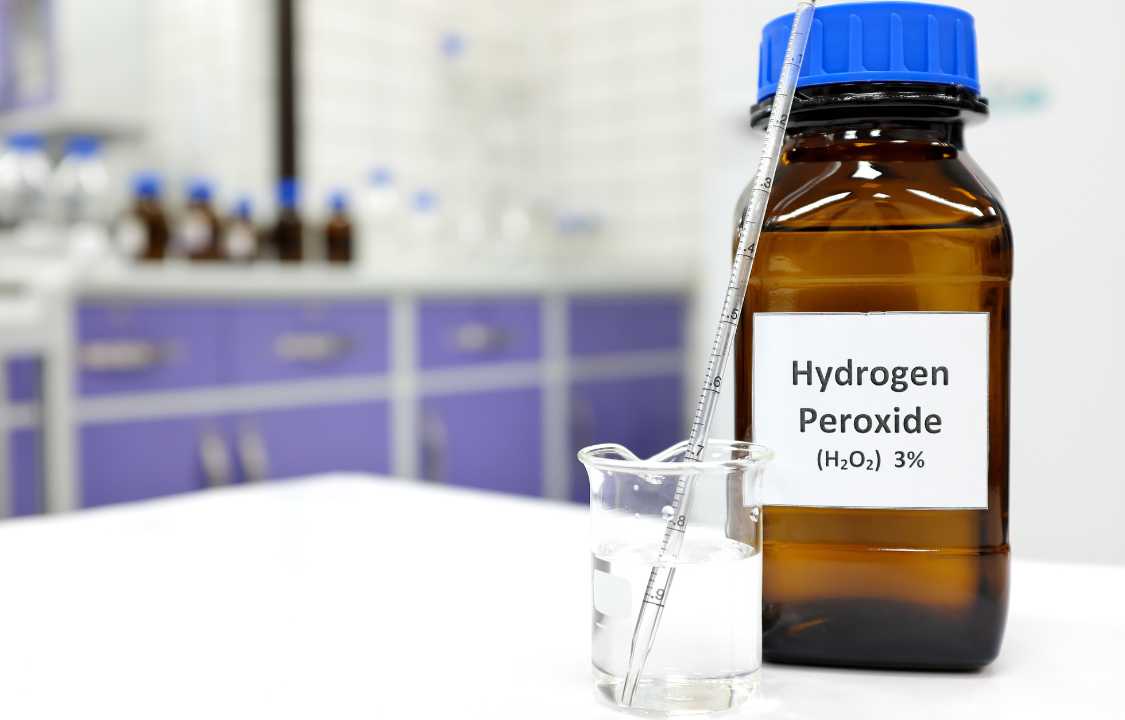Oral Care
Is It Safe To Use Hydrogen Peroxide Products To Whiten Your Teeth?
Products that contain hydrogen peroxide can help you get a brighter smile—as long as you use them the right way.
Teeth whitening, often referred to as “bleaching,” is a popular cosmetic dental procedure that many individuals seek to achieve a bright and radiant smile. Hydrogen peroxide is a common ingredient found in numerous teeth whitening products, sparking questions about its safety and effectiveness. In this comprehensive exploration, we will delve into the world of teeth whitening, examining how hydrogen peroxide contributes to the process, its safety profile, and alternative bleaching ingredients.
The Role of Hydrogen Peroxide in Teeth Whitening
Hydrogen peroxide, an acidic chemical compound represented by the formula H₂O₂, has a longstanding history of use in teeth bleaching and various oral care products, including toothpaste and mouthwash. This pale blue liquid is not limited to oral care; it is also employed as a household cleaner, bleaching agent, and antiseptic. Hydrogen peroxide’s potent oxidizing properties make it a valuable component in teeth-whitening products.
Dr. Chris Strandburg, a dentist and spokesperson for Waterpik, elucidates the mechanism by which hydrogen peroxide enhances tooth whiteness. “Hydrogen peroxide brightens and whitens the teeth via a chemical process, by breaking down the stains from polymers into monomers via an oxidation process,” explains Dr. Lisa Creaven, a UK dentist and co-founder of Spotlight Oral Care. This chemical action effectively dissolves stains, gradually and safely whitening teeth without compromising their health.
Given its formidable potency, hydrogen peroxide is typically diluted when used in teeth whitening to safeguard the enamel and gums from potential harm. In this diluted form, it is often combined with other whitening agents like baking soda to optimize its efficacy.
The Safety of Hydrogen Peroxide in Teeth Whitening
When employed as an ingredient in regulated commercial whitening products, hydrogen peroxide is considered safe. It is a component of various oral care products, including toothpaste and mouthwash, as well as over-the-counter whitening products such as strips, pens, and gels. These products allow hydrogen peroxide to come into close contact with tooth surfaces, where it breaks down stains, ultimately brightening the shade of the teeth.
Dr. Strandburg affirms the long-established safety record of hydrogen peroxide in teeth bleaching without substantially compromising tooth enamel strength. However, it is essential to exercise caution and avoid overuse, which could lead to potential harm to teeth and gums over time.
Over-the-counter teeth whitening products generally contain hydrogen peroxide concentrations ranging from 3 to 20 percent. Dental office treatments may feature even more concentrated formulations. For everyday use, most toothpaste and mouthwash products contain lower hydrogen peroxide levels, rendering them gentler and safer for long-term usage. In addition to its whitening properties, hydrogen peroxide in these products contributes to improved gum health by combatting bacteria associated with gum disease.
It’s worth noting that while whitening strips or gels have the potential to irritate gums or induce tooth sensitivity, these issues can often be mitigated by limiting applications and allowing rest periods between sessions.
Dr. Strandburg advises caution by suggesting that individuals limit their initial treatment to approximately seven to 14 sessions. It is advisable to provide a day’s respite between sessions to prevent excessive stress on teeth and gums. Exceeding 20 bleaching sessions per year can pose risks to tooth enamel. By adhering to these guidelines, most individuals can achieve noticeable teeth brightening without enduring lasting negative consequences.
Moreover, if you contemplate creating your own hydrogen peroxide whitening mixture at home, it is imperative to exercise care. Dr. Heather Kunen, co-founder of Beam Street and an orthodontist, underscores the potential hazards associated with creating a solution that is too concentrated. Dr. Kunen recommends a dilution ratio of at least 1:1 of water to hydrogen peroxide, emphasizing the importance of consulting with a dentist before attempting any homemade solution.
Exploring Alternative Bleaching Ingredients
While hydrogen peroxide is a prevalent teeth-whitening agent, several alternative ingredients are also utilized for this purpose:
1. Carbamide Peroxide: This compound is a common whitening agent in over-the-counter products. It is a combination of hydrogen peroxide and carbamide, working slightly more slowly but boasting a longer shelf life.
2. Baking Soda: While not a true bleaching agent, baking soda helps lift stains from teeth, providing a sparkle.
3. Pthalimidoperoxycaproic Acid (PAP): Some whitening brands are departing from traditional peroxides and adopting new formulas like PAP. PAP is considered less harsh on enamel and gum tissues compared to hydrogen peroxide, potentially making it a more appealing option for future whitening products.
4. Charcoal: Charcoal-based teeth whitening products have gained attention, but they come with a caveat. Research from the Journal of the American Dental Association (JADA) indicates that charcoal products lack robust evidence supporting both safety and efficacy. Dr. Creaven advises against their use, highlighting that these products can lead to irreversible damage to tooth surfaces by mechanically removing enamel layers over time.
Regardless of the chosen teeth-whitening method, consulting with a dentist is recommended to ensure that your teeth and gums are in good health. Dentists prioritize the well-being of your oral cavity and can provide guidance on selecting the most suitable approach to achieve your desired level of teeth whitening. Regular dental check-ups and communication with dental professionals should be integral to your oral care routine.
In conclusion, teeth whitening, often involving the use of hydrogen peroxide, is a safe and effective means of enhancing your smile’s brilliance. Adhering to recommended usage guidelines and consulting with dental experts can help you achieve the results you desire while safeguarding the health of your teeth and gums. While alternative bleaching ingredients exist, each should be approached with a clear understanding of their benefits and potential risks. The pursuit of a radiant smile is a journey best undertaken with due diligence and professional guidance to ensure excellent oral health throughout your life.

